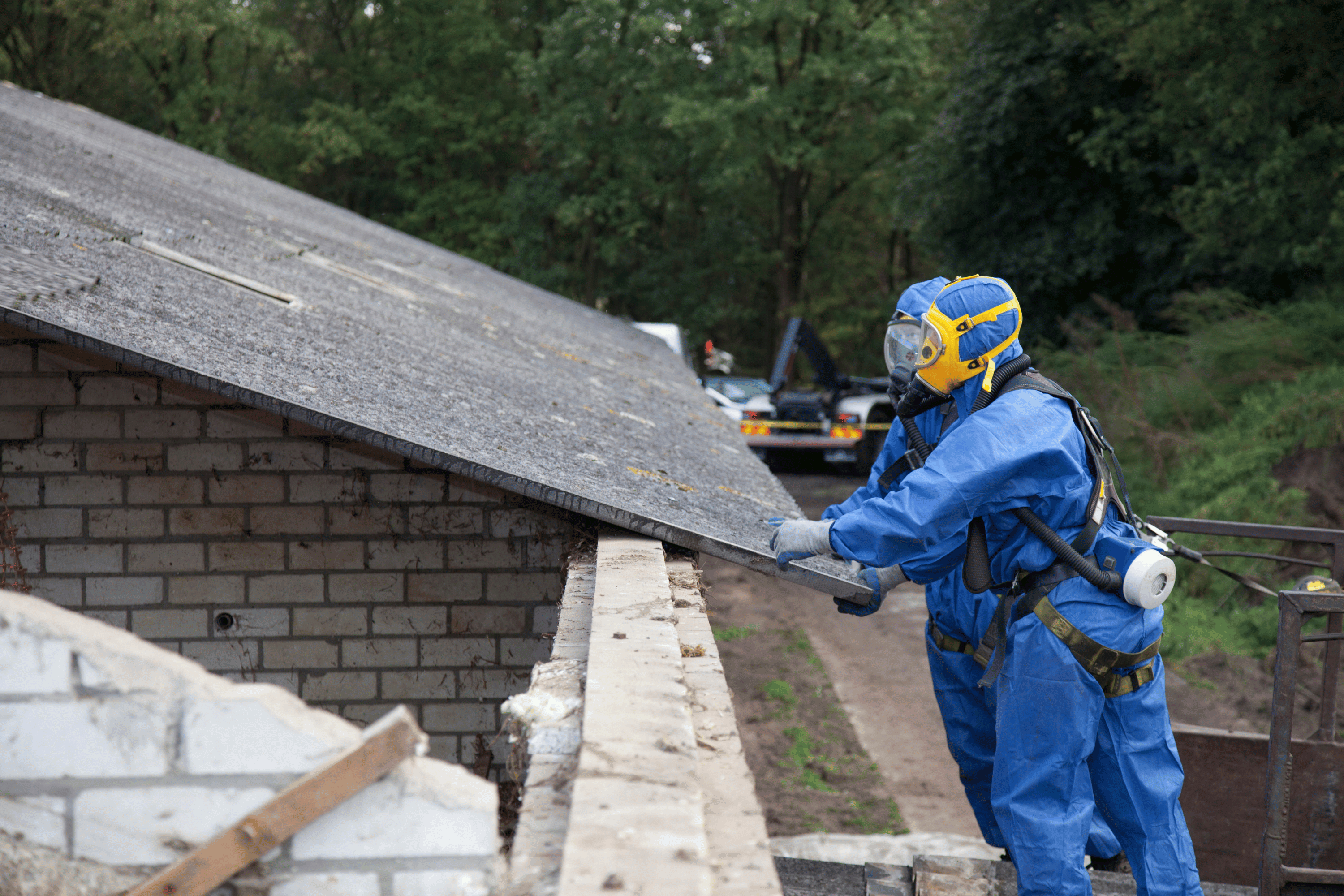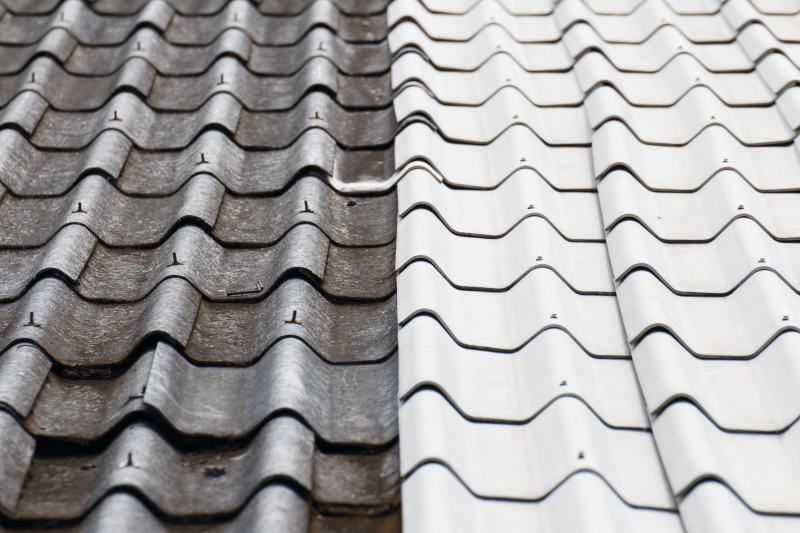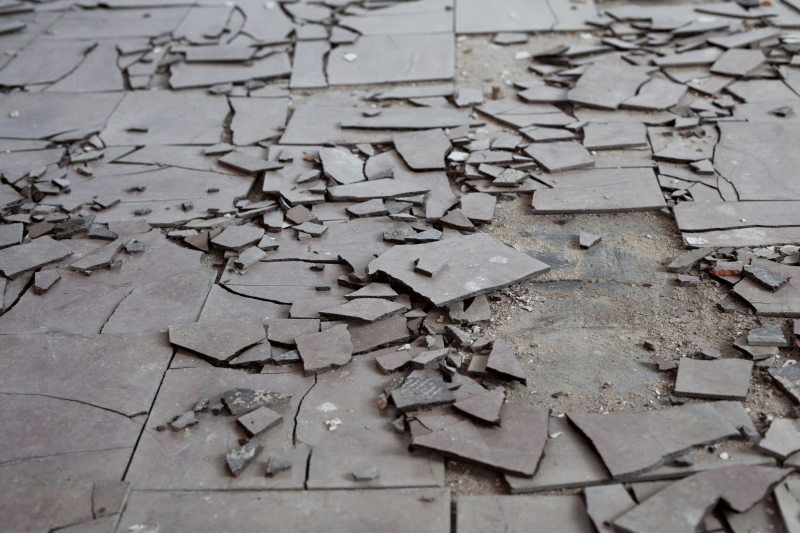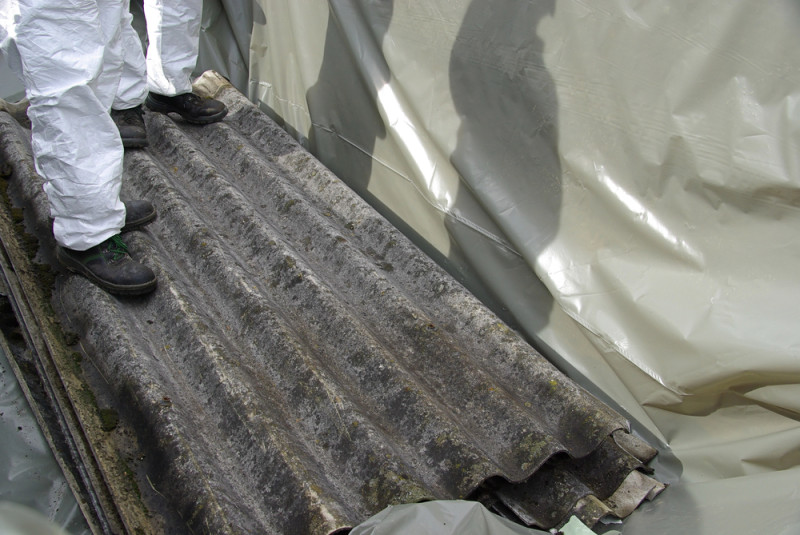Asbestos sheeting has long been a silent danger lurking in residential and commercial properties across the world. Before its hazardous health effects were widely known, asbestos was used in many building materials for its durability, heat resistance, and affordability. However, once the dangers of asbestos exposure became clear, the use of asbestos-containing materials (ACMs) was banned in many countries, including Australia. Today, identifying asbestos sheeting is crucial for protecting your health and ensuring that properties are safe for renovation, demolition, or occupation.
If you suspect asbestos in your property, Rapid Asbestos Removals can help with professional identification and safe removal, ensuring minimal risk to you and your family.
Require asbestos removal? Contact us today.
Understanding asbestos sheeting
Asbestos sheeting refers to flat or corrugated sheets made with asbestos fibres mixed into cement or other materials. These sheets were commonly used in construction between the 1940s and 1980s, when asbestos was valued for its strength and insulating properties. Due to its widespread use, many older buildings may still contain asbestos cement sheeting today, even after bans came into effect.
It’s important to note that asbestos poses minimal risk when it is intact and undisturbed. However, once it begins to deteriorate, is cut, or is damaged, asbestos fibres can be released into the air. Inhalation of these fibres can lead to severe health conditions, such as mesothelioma, lung cancer, and asbestosis. As a result, accurate identification and safe handling of asbestos cement sheeting are essential to prevent exposure.
If you’re unsure about the presence of asbestos in your building, Rapid Asbestos Removals offers professional asbestos inspections and testing to identify asbestos material and advise on the best course of action.
Visual characteristics of asbestos cement sheeting
Identifying asbestos cement sheeting can be tricky due to its similarity to modern cement sheets. Asbestos cement sheet products were widely used in construction because of their durability, heat resistance, and affordability. These sheets were manufactured in both flat and corrugated styles, making them versatile for various applications.
Key visual features of asbestos cement sheeting
- Colour: Asbestos cement sheeting is often grey or off-white. Over time, these sheets may weather and darken, sometimes developing a mottled or patchy look.
- Surface texture: Unlike modern fibre cement sheets, asbestos cement sheets usually have a rough, grainy surface. Up close, asbestos fibres may be visible within the cement matrix, giving the sheet a more porous or fibrous appearance.
- Corrugations: Corrugated asbestos cement sheets typically have sharper, more defined ridges compared to modern non-asbestos alternatives. These were often used in roofing and external cladding for sheds, garages, and industrial buildings.
- Flat sheets: Flat asbestos cement sheets were commonly used for internal wall linings, ceilings, and external cladding. These sheets are heavier and more brittle than modern alternatives and may appear more worn or weathered due to age.
Asbestos cement sheet vs modern cement sheeting
Distinguishing asbestos cement sheet products from modern cement sheeting can be challenging because they look very similar. However, modern cement sheets do not contain asbestos and often feature manufacturer stamps or labels that indicate their production date. If your property was constructed or renovated between the 1940s and the 1980s, and the sheets appear unmarked or aged, there is a good chance they may be asbestos cement sheeting.
If you’re uncertain whether your building contains asbestos cement sheet products, it’s essential to have a professional asbestos inspection carried out. Rapid Asbestos Removals can help identify and safely manage ACMs, including asbestos cement sheets.
Physical properties of asbestos cement sheeting
While the visual identification of asbestos cement sheeting can provide some clues, the physical properties of the material may further help in distinguishing asbestos sheeting from other materials.
Common physical characteristics
- Weight: Asbestos cement sheeting is typically denser and heavier than modern fibre cement sheets. This is due to the asbestos fibres mixed into the cement, which increase the sheet’s mass.
- Brittleness: Over time, asbestos sheeting tends to become more brittle. When damaged or aged, the sheets may easily crack or break, releasing asbestos fibres into the air.
- Fire resistance: One of the key reasons asbestos was used in construction was its fire-resistant properties. Asbestos sheets can withstand high temperatures without igniting, making them ideal for roofs, walls, and ceilings in older structures.
- Insulation: Asbestos was known for its insulation properties. In some buildings, asbestos sheets may have been used to line areas that required heat insulation or fire protection.
If you suspect a material might be asbestos sheeting, it is critical to avoid touching or disturbing it, as this can release harmful fibres into the air. Rapid Asbestos Removals can safely handle and dispose of asbestos, ensuring the area remains safe.
Common uses and locations of asbestos sheeting
Asbestos sheeting was used in a wide variety of applications due to its versatility and affordability. You are likely to find asbestos-containing sheets in the following areas:
Exterior applications
- Roofing: Corrugated asbestos sheeting was extensively used in roofing due to its weather resistance. It’s often found on older sheds, garages, and industrial buildings.
- Cladding: Asbestos sheets were commonly used for external wall cladding on residential and commercial buildings, providing both insulation and weatherproofing.
- Fencing: In older properties, asbestos sheeting was sometimes used as fencing material due to its durability.
Interior Applications
- Ceilings: Asbestos flat sheets were frequently used in interior ceilings, especially in kitchens, bathrooms, and laundries, where moisture and heat resistance were important.
- Wall linings: Asbestos sheets were used in internal wall linings in homes and commercial spaces, particularly in high-moisture areas.
- Eaves and fascias: You might find asbestos sheets in eaves, soffits, and fascia boards of older buildings, providing a fire-resistant barrier.
It is important to note that while asbestos sheeting was most commonly used in these areas, it can also be found in other unexpected places, such as around hot water tanks or pipes. If you’re renovating or demolishing, Rapid Asbestos Removals can assist in locating asbestos-containing materials (ACMs).
Require asbestos inspection or removal? Contact us today.
Health and safety precautions
Asbestos sheeting poses significant health risks if it is disturbed, damaged, or deteriorating. When asbestos fibres become airborne, they can be inhaled and remain lodged in the lungs, leading to severe health problems over time.
There are a few essential safety precautions to keep in mind when dealing with potential asbestos sheeting:
- Do not touch or disturb: If you suspect that a material contains asbestos, it is vital not to disturb it. Avoid drilling, cutting, sanding, or breaking the sheets, as this can release dangerous fibres.
- Wear protective equipment: If you are working near asbestos sheeting, ensure that you wear appropriate protective gear, such as a P2 respirator, disposable coveralls, gloves, and safety glasses.
- Ventilate the area: If asbestos is being removed or tested, ensure that the area is well-ventilated, and restrict access to prevent others from entering the space.
- Keep the area wet: Wetting down asbestos sheeting can reduce the likelihood of fibres becoming airborne during handling.
- Do not vacuum: Standard vacuum cleaners are not equipped to handle asbestos fibres. Special HEPA-filtered vacuums are required to safely clean up any asbestos debris.
For a safe and secure process, it’s highly recommended to contact professionals, such as Rapid Asbestos Removals, to manage any potential ACMs in your home or workplace.

Professional inspection and removal
The safest way to identify and manage asbestos sheeting is to engage professional asbestos inspectors. Certified asbestos assessors can take samples from suspected materials and analyse them in a lab to confirm whether asbestos is present. Once asbestos is confirmed, a professional removal service, like Rapid Asbestos Removals, should be contacted to safely remove and dispose of the material.
Why choose Rapid Asbestos Removals?
- Accurate identification: Professionals from Rapid Asbestos Removals can quickly determine whether a material contains asbestos, ensuring that no potentially dangerous sheets are overlooked.
- Safe removal: Our licensed asbestos removalists are trained to remove ACMs safely, minimising the risk of exposure.
- Disposal: Asbestos must be disposed of at licensed waste facilities. Rapid Asbestos Removals ensures that all waste is handled and disposed of according to strict safety regulations.
Avoid DIY removal
DIY asbestos removal is not recommended due to the high health risks involved. Even small disturbances to asbestos sheeting can release harmful fibres into the air, posing long-term risks to you and those around you. Professional asbestos removal ensures that the material is handled in accordance with safety protocols, protecting your health and the environment.
Identify and remove asbestos sheeting with Rapid
Identifying asbestos sheeting is a vital part of maintaining the safety of older homes and commercial buildings. Knowing what asbestos sheeting looks like, its physical properties, and where it is commonly used can help you assess potential risks. If you suspect asbestos sheeting is present in your home or workplace, always prioritise professional inspection and removal to minimise health hazards.
For expert assistance, contact Rapid Asbestos Removals. We offer comprehensive asbestos identification and removal services, ensuring your property is safe and asbestos-free.
FAQs about asbestos cement sheeting
Asbestos sheeting often appears grey or off-white and can have a rough, grainy texture. It was manufactured in both flat and corrugated forms, with corrugated asbestos sheets featuring sharp, well-defined ridges. Weathering over time can cause the sheets to darken or take on a mottled appearance.
Asbestos sheeting was used in a variety of applications, including roofing, external wall cladding, interior ceilings, wall linings, eaves, fascias, and even fencing. It was prevalent in homes and commercial buildings constructed between the 1940s and 1980s.
Modern cement sheets do not contain asbestos and are usually smoother in texture compared to asbestos sheeting, which is rougher and grainier. Asbestos sheets are also heavier and more brittle. If your building was constructed before 1990, it’s advisable to have materials tested by a professional, such as Rapid Asbestos Removals, for accurate identification.
Asbestos poses minimal risk if it is intact and undisturbed. However, if asbestos sheeting is damaged, cut, or deteriorates, it can release harmful fibres into the air. Inhalation of these fibres can lead to serious health conditions like mesothelioma and asbestosis.
If you suspect asbestos sheeting in your home, it’s important not to disturb it. Avoid cutting, drilling or breaking the material. Contact a professional asbestos removal company to identify asbestos materials and safely remove and dispose of them.
DIY asbestos removal is highly discouraged due to the health risks associated with airborne asbestos fibres. Licensed asbestos removal professionals, like those at Rapid Asbestos Removals, are trained to handle asbestos safely and ensure proper disposal according to regulations.
Exposure to asbestos fibres can lead to severe health issues, including mesothelioma, lung cancer, and asbestosis. These conditions may take years or even decades to develop after exposure. Therefore, it’s crucial to avoid any contact with materials that might contain asbestos and rely on professional removal services to minimise risk.
Asbestos sheeting must be disposed of at licensed facilities. Professional asbestos removal companies like Rapid Asbestos Removals ensure that asbestos materials are removed, packaged, and transported according to strict safety guidelines and legal requirements.


